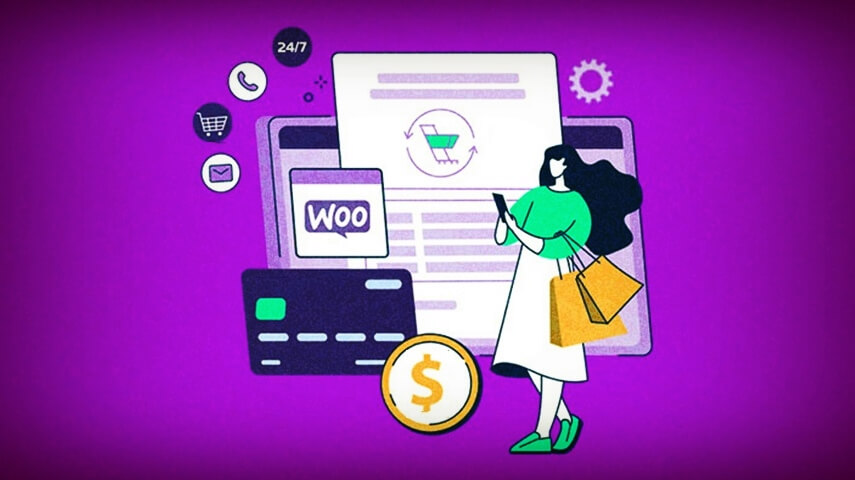B2B E-Commerce Platform
Choosing the right B2B e-commerce platform is a critical decision that can significantly impact the success of your enterprise. With an abundance of options available in the market, each offering unique features and capabilities, it’s essential to carefully evaluate your business needs and goals before making a decision. In this comprehensive guide, we will explore the key factors to consider when selecting a B2B e-commerce platform.
Understanding B2B E-Commerce
Before delving into the selection process, it’s crucial to have a solid understanding of B2B e-commerce and its distinctive characteristics. B2B transactions involve businesses buying and selling goods or services to one another, as opposed to the more familiar business-to-consumer (B2C) model. B2B transactions often involve larger order volumes, negotiated pricing, and complex workflows tailored to the specific needs of businesses.
Key Features to Consider
1. Scalability
As your business grows, so should your e-commerce platform. A scalable platform can accommodate an increasing number of products, users, and transactions without compromising performance. Look for a solution that can seamlessly scale to meet the evolving demands of your B2B operations.
2. Integration Capabilities
Efficient integration with existing business systems is crucial for a streamlined and cohesive operation. Ensure that the e-commerce platform can integrate with your Enterprise Resource Planning (ERP), Customer Relationship Management (CRM), and other essential software. Integration capabilities will enhance automation, reduce manual errors, and provide a holistic view of your business processes.
3. Customization Options
B2B e-commerce often involves complex pricing structures, negotiated contracts, and specific customer hierarchies. A platform with robust customization options allows you to tailor the user experience to meet the unique needs of your customers. Look for solutions that offer flexible pricing models, customizable catalogs, and personalized user interfaces.
4. Security and Compliance
Security is paramount in B2B transactions, especially when dealing with sensitive information and large transaction volumes. Choose a platform that adheres to industry standards for data security and compliance, such as PCI DSS (Payment Card Industry Data Security Standard) and GDPR (General Data Protection Regulation). Robust security measures will build trust with your customers and protect your business from potential threats.
5. Mobile Responsiveness
In the digital age, a significant portion of B2B transactions occurs on mobile devices. Ensure that the e-commerce platform is mobile-responsive, providing a seamless experience for users on various devices. This includes not only the customer-facing interface but also the administrative backend, allowing your team to manage operations efficiently on the go.
6. User Experience
A user-friendly interface is essential for B2B e-commerce success. Your platform should offer intuitive navigation, efficient search capabilities, and a smooth checkout process. Consider the end-to-end user experience for both customers and internal users to enhance satisfaction and productivity.
7. Support for Multiple Channels
B2B businesses often engage customers through multiple channels, including online marketplaces, direct sales, and distributor networks. Choose a platform that supports a multi-channel approach, enabling you to reach customers wherever they prefer to conduct business. This flexibility can be a key differentiator in a competitive market.
Platform Types: On-Premise vs. Cloud-Based
When selecting a B2B e-commerce platform, one of the fundamental decisions is whether to opt for an on-premise solution or a cloud-based platform. Each has its advantages and considerations:
On-Premise Solutions
- Control and Customization: On-premise solutions provide greater control over the platform, allowing for extensive customization to align with specific business requirements.
- Upfront Costs: Typically, on-premise solutions involve higher upfront costs for hardware, software, and implementation.
Cloud-Based Solutions
- Scalability and Flexibility: Cloud-based platforms are known for their scalability and flexibility, enabling businesses to scale resources up or down based on demand.
- Cost-Efficiency: Cloud solutions often have lower upfront costs, as they eliminate the need for significant investments in hardware and infrastructure.
The choice between on-premise and cloud-based solutions depends on your business’s specific needs, budget considerations, and long-term goals.
Selecting the Right Vendor
Choosing the right vendor is as crucial as selecting the right platform. Consider the following factors when evaluating potential vendors:
1. Vendor Reputation
Research and assess the reputation of potential vendors. Look for customer reviews, case studies, and testimonials to gain insights into the experiences of other businesses that have partnered with the vendor. A vendor with a positive reputation is more likely to deliver a reliable and effective solution.
2. Support and Training
Effective vendor support is essential for a smooth implementation and ongoing operation of your B2B e-commerce platform. Inquire about the level of support offered, including response times and available channels. Additionally, assess the vendor’s training resources to ensure your team can effectively utilize the platform’s features.
3. Upgrade and Maintenance Policies
Understand the vendor’s policies regarding platform upgrades and maintenance. Regular updates are essential to ensure security, performance improvements, and access to new features. Clear communication about upgrade schedules and potential disruptions is crucial for effective planning.
4. Total Cost of Ownership
Consider the total cost of ownership (TCO) over the lifespan of the platform. While upfront costs are important, factor in ongoing expenses such as licensing fees, maintenance, and support. A comprehensive understanding of TCO will help you make a more informed decision about the long-term viability of the platform.
5. Future Roadmap
Inquire about the vendor’s future development roadmap. A vendor that invests in ongoing platform improvements and stays abreast of emerging technologies demonstrates a commitment to supporting your business’s growth and adapting to changing market dynamics.
Implementation and Adoption
Once you’ve selected a B2B e-commerce platform and vendor, successful implementation and adoption are critical for realizing the full benefits of your investment. Consider the following best practices:
1. Develop a Comprehensive Implementation Plan
Work closely with your chosen vendor to create a detailed implementation plan. Define milestones, allocate resources, and establish clear timelines to ensure a smooth transition to the new platform.
2. Provide Adequate Training
Invest in training programs to ensure that your team is proficient in using the new platform. This includes both end-users and administrators who will be responsible for managing and maintaining the system.
3. Monitor and Evaluate
Regularly monitor the performance of your B2B e-commerce platform and gather feedback from users. Use analytics tools to assess key performance indicators (KPIs) and identify areas for improvement. Continuous evaluation allows you to make informed decisions for optimization and growth.
Conclusion
Choosing a B2B e-commerce platform is a strategic decision that requires careful consideration of various factors. By understanding the unique requirements of B2B transactions and evaluating platforms based on scalability, integration capabilities, customization options, security, mobile responsiveness, user experience, and multi-channel support, you can make an informed decision that aligns with your business goals.
Whether opting for an on-premise or cloud-based solution, selecting the right vendor is equally critical. Assess vendor reputation, support and training offerings, upgrade policies, total cost of ownership, and the vendor’s future roadmap to ensure a successful long-term partnership.
Remember that the journey doesn’t end with platform selection; effective implementation, training, and ongoing evaluation are essential for maximizing the benefits of your B2B e-commerce investment.




